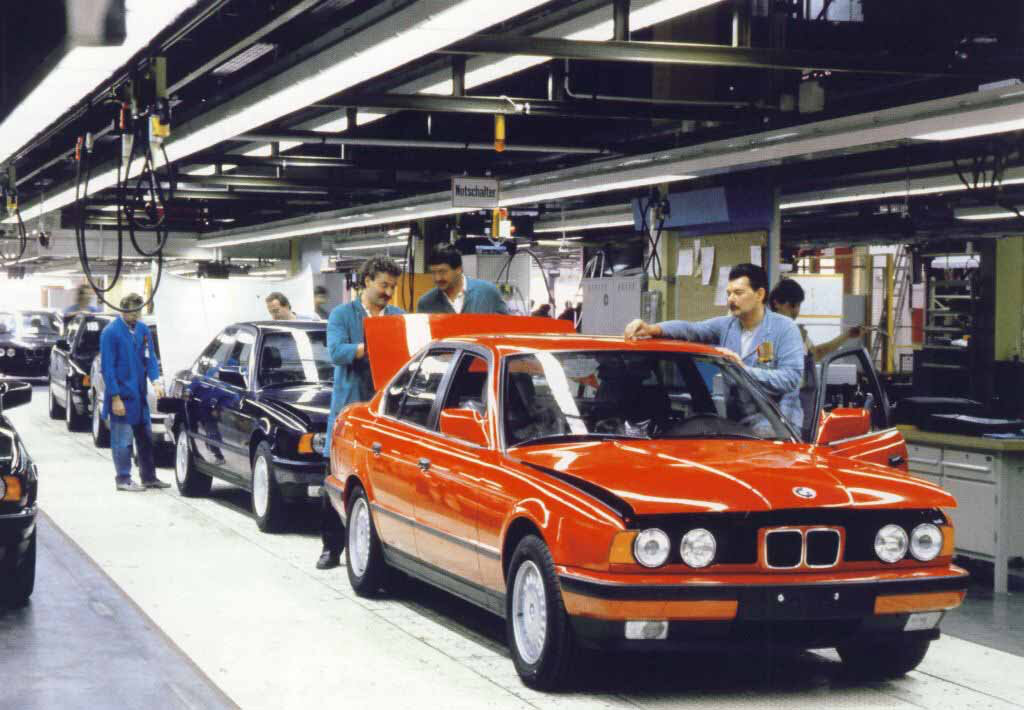Modern Classic: BMW E34 5 Series
The BMW E34 5 Series was launched in 1987 and was a miniature version of the 7 Series. Photos: Supplied
When I first began reading motoring magazines as a teenager, I remember a beautiful car that stood out and that I took great interest in, the BMW E34 5 Series in 525i and 535i form.
The E34 was the third generation of the 5 Series and the most successful. It spawned many different models, but these were the initial two models for the 1987 launch.
BMW first launched the 5 Series in 1972 with the E12. This morphed into the second generation E28 from 1981 to 1987.
The third generation E34 was unveiled in December 1987. It was a dramatic departure from the E28 and still looks fresh today, thanks to its coefficient of 0.30. It would last until 1996 before being replaced by the slipperier E39 fourth generation.
What I loved about the E34 5 Series was that it was a miniature version of the 7 Series. It looked upmarket and sporty. And against the competition, which at the time was the Mercedes-Benz E-Class, Jaguar Sovereign, and Lexus LS400, the BMW was the sportiest and most driver-oriented.
The BMW E34 5 Series was built in Dingolfing, Germany (above) and Rosslyn, South Africa.
The E34 was created by Ercole Spada in 1982 and was finalised for production design in 1985. In the 1980s cars took five years from concept to design, as opposed to today’s shorter timelines of 18 months to two years thanks to digitalisation.
The E34 ended up with nine engines over its lifetime ranging from straight fours, straight sixes, and magnificent V8.
The E34 debuted the “Touring” (aka wagon) in 1992 and this was the brand’s most successful run of these, although they still feature today in the seventh-generation model; however, SUVs have largely killed the “cool” wagon category.
Out of its production sites of Dingolfing in Germany and Rosslyn in South Africa, BMW produced the 125kW straight-six 525i and 155kW straight-six 535i initially. In 1988, along came the four-cylinder 520i producing 95kW (later upgraded in 1989 to a straight-six putting out 110kW and holding this all the way to 1996).
A 530i straight-six good for 138kW was introduced in 1988 (later upgraded to a V8 in 1992 of 160kW). The 525i jumped to 141kW from 1992. A 540i took over the 535i in 1992 and put out 210kW.
The BMW E34 5 Series finished its production cycle in 1996.
The flagship was the M5 which had a 3.6-litre six putting out 232kW from 1988 and this was switched to a 3.8-litre V8 with 250kW from 1992. Confused? There were plenty of choices!
If you weren’t comfortable with petrol, you had an option of a diesel engine including the 524td putting out 85kW and in existence from 1988 to 1991, before it was replaced by the 525tds in 1991 putting out 105kW.
The most popular model was the 525i with 434,549 sales, closely followed by the 520i at 426,971.
Cosmetically the V8 models had a wider grille than the sixes and fours, but later the wider grille was available on all models. The M5 was produced in wagon and sedan form, and gained a 6-speed transmission in the last year of production, as did the 540i which also picked up a five-speed automatic.
A special 540iLE also was sold in Australia and the UK, which had the interior of the M5, and had the six-speed manual, and was produced in 70 units.
The E34 5 Series can still be seen on roads today, even in New Zealand, as it was built well and still looks fresh almost 35 years later. It had ABS brakes in its day and in the early 1990s introduced airbags. Many also have automatic stability control (ASC) and traction control (ASC+T). The E34 also heralded the availability of 4 wheel drive in some models.
Most of all, for me, the combination of the 5- or 6-speed manual, with the sporty dynamics and beautiful styling, plus the driver-oriented cockpit, make the E34 a real classic. Best of all would be a six-speed 540i manual, right at the end of the series in 1995, would be the bomb. For purity, I think a 5-speed manual 535i from 1988 would also be fun.
We would have to go into garages across New Zealand to find some mint examples of the 5 series as sadly TradeMe yields one. Got one of these special cars? Get in touch.
The BMW E34 M5 was the flagship for this model range.




